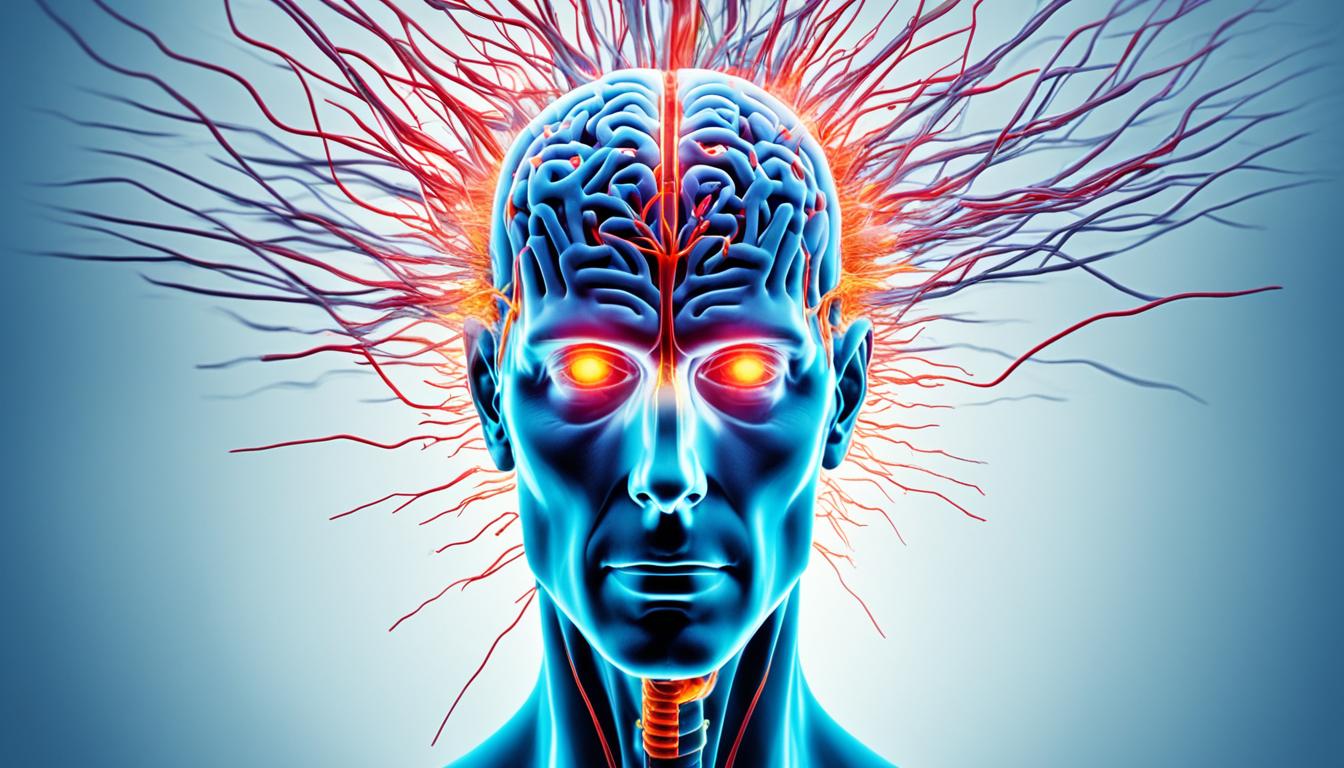Disclosure: This Post Contains Affiliate Links; We earn a commission on purchases.
With the dawn of the technological revolution, our daily environment has become saturated with a myriad of devices that make modern life more connected and efficient. While the comforts and conveniences afforded by these advancements are undeniable, they come hand-in-hand with a significant increase in electromagnetic field (EMF) emissions from sources such as mobile phones, computers, and base stations. This surge in EMF sources has given rise to public health concerns, particularly regarding a condition known as Electromagnetic Hypersensitivity (EHS). EHS embodies a variety of non-specific health symptoms which some individuals believe are triggered by exposure to EMF.
The World Health Organization (WHO) examines these concerns critically, seeking to demystify Electromagnetic Hypersensitivity and its associated health risks of EMF. Individuals report varied ailments such as skin reactions, fatigue, and difficulties in focusing, symptoms they attribute to Electromagnetic Hypersensitivity or EMF sensitivity, despite a lack of conclusive scientific evidence establishing a direct link. Terms like “Idiopathic Environmental Intolerance” (IEI) have been introduced by WHO to encompass a broader range of environmental sensitivities, including EHS, which remains under scrutiny within the scientific and medical community.
As a society committed to both progression and well-being, it is crucial to navigate these emerging challenges by fostering an informed dialogue on the possible health implications of our technologically rich lifestyles. In doing so, we aim to empower individuals with knowledge to make informed decisions about their interactions with daily EMF sources.
Key Takeaways
- EHS is a condition where individuals report health symptoms attributed to EMF exposure.
- There is an increasing number of EMF sources due to the technological revolution.
- The WHO is instrumental in providing information and addressing public concerns on EMF sensitivity.
- No scientific consensus currently exists to conclusively link EHS symptoms to EMF exposure.
- Understanding EHS involves examining a wide array of environmental and health factors.
- Continued research and dialogue are needed to adequately address Electromagnetic Hypersensitivity within the context of public health.
Understanding EHS: Definition and Symptoms
Amidst concerns growing parallel with our technological advancements, Electromagnetic Hypersensitivity (EHS) has emerged as a condition marked by an array of non-specific health complaints. Individuals experiencing EHS often report an onset of symptoms following close contact with electronic devices or in high EMF environments. Understanding this phenomenon starts with a clear definition and recognition of the common symptoms reported by those affected.
Defining Electromagnetic Hypersensitivity (EHS)
Electromagnetic Hypersensitivity, frequently abbreviated as EHS, encompasses a collection of non-specific symptoms that individuals attribute to exposure to electromagnetic fields (EMF). Despite considerable debate in the scientific community, EHS is not officially recognized as a medical condition due to the absence of clear diagnostic criteria and confirmed physiological or toxicological basis. Those afflicted with EHS symptoms commonly report an increased sensitivity to EMF, leading to a condition informally known as Electrosensitivity.
Common Symptoms and Experiences of EHS Sufferers
Reports from individuals who identify with EHS include a broad spectrum of **non-specific symptoms**. These span **dermatological symptoms** like skin redness, tingling, and burning sensations—as well as a diverse array of **vegetative symptoms** including fatigue, concentration difficulties, dizziness, and heart palpitations. The multifaceted nature of **EHS symptoms** presents a diagnostic challenge, often leaving those affected searching for validation and understanding of their condition.
Comparative Analysis of EHS and Related Conditions
Electromagnetic Hypersensitivity shows parallels to other environmental intolerances, such as Multiple Chemical Sensitivity (MCS) and Idiopathic Environmental Intolerance (IEI). Like EHS, MCS is characterized by a range of **non-specific symptoms** often in response to low-level exposures to various chemicals. The comparative analysis of these conditions reveals that while symptomatology may overlap, the demarcation lies in the supposed triggers—EMF for EHS and chemicals for MCS. Neither of the conditions has established roots in currently known medical pathology, hence the term **idiopathic environmental intolerance** being applied to encapsulate such syndromes.
| Condition | Common Triggers | Typical Symptoms | Global Recognition |
|---|---|---|---|
| EHS (Electromagnetic Hypersensitivity) | Electromagnetic Fields | Non-specific symptoms including dermatological and vegetative | Not officially recognized, variably accepted |
| MCS (Multiple Chemical Sensitivity) | Low-level chemical exposures | Similar range of non-specific symptoms | Recognition varies, lack of clear diagnostic criteria |
| IEI (Idiopathic Environmental Intolerance) | Diverse environmental factors | Non-specific, medically unexplained symptoms | More accepted as a descriptor rather than a diagnosis |
By examining the nature and experiences of EHS, we move closer to an enhanced comprehension of this enigmatic condition. This preliminary dive into the world of Electrosensitivity sets the stage for deeper exploration into public perception, prevalence, and scientific scrutiny surrounding the phenomenon.
EHS (Electromagnetic Hypersensitivity): Public Perception and Prevalence
As society grapples with the ongoing digital transformation, the prevalence of EHS has become a subject of both public health discussion and personal concern. The presence of EMF sensitivity is no longer a fringe phenomenon but is now recognized by a growing number of individuals worldwide. Public perception varies greatly, informed by personal anecdotes, local awareness campaigns, and the active engagement of EHS self-help groups.
Reports indicate that countries such as Sweden, Germany, and Denmark have witnessed a relatively higher number of EHS incidences compared to the United Kingdom, Austria, and France. This geographic variability in EHS suggests that cultural and societal factors significantly influence awareness and the interpretation of symptoms that, for a portion of the population, are attributed to electromagnetic fields in their environment.
One notable pattern is the higher incidence of Video Display Unit (VDU) related symptoms in Scandinavian countries, predominantly manifesting as skin disorders allegedly linked to EMF exposure. The emergence and shared experiences of such symptoms often lead those affected to seek community and support through EHS-focused networks.
Prevalence can be seen as a mirror, reflecting not only the ubiquity of EMF in our surroundings but also the varying degrees of societal attention and medical recognition given to EHS.
It is critical to understand, though, that the broad spectrum of symptoms categorized under EHS are not exclusive to self-identified EHS individuals. They are, in fact, commonly experienced in the general population and often do not have a single, identifiable cause. This further complicates the efforts to assess and address EMF health effects, highlighting an inherent complexity in differentiating EHS occurrences from coincidental health complaints within broad demographics.
In this landscape, EHS self-help groups have emerged as a crucial resource, offering not just solace but a rallying point for those seeking to illuminate the health implications of living in a world suffused with electromagnetic fields.
- Assessing the Prevalence: The Challenge of Varied Reporting Standards
- Global Disparities: Cultural Influences on EHS Recognition
- The Commonality of Symptoms: EHS and Widespread Health Concerns
As debates continue, the need for substantial research and informed public discourse persists. The aim remains to ensure that public health policies envelop a balanced view that acknowledges the personal realities of EHS while adhering to scientific rigour and evidence-based approaches.
Scientific Research on EHS: Controlled Studies and Outcomes
Amid unfolding debates on Electromagnetic Hypersensitivity (EHS), the commitment to scientific scrutiny remains as steadfast as ever. It is within the quiet realm of controlled lab conditions that researchers embark on double-blind studies, aiming to ascertain the factual nature of EHS and its potential ties to EMF exposure. Here, we delve into the existing research, uncovering what systematic inquiry reveals about EHS under the lens of empirical testing.
Overview of Double-Blind Provocation Studies
EHS studies are pivotal in shaping our understanding of the condition. Unraveling the complexities of EHS, double-blind studies have rigorously tested the hypothesis that those self-identifying with EHS can detect EMF fields and experience exacerbated symptoms in their presence. These studies have provided a clear narrative; the consistency of symptom patterns does not reliably emerge in response to actual EMF exposure, drawing attention to the placebo or nocebo effects at play.
Environmental Factors That May Contribute to EHS Symptoms
Scrutiny of EHS symptoms often brings to light a spectrum of environmental stressors that may play a more pronounced role than previously acknowledged. Factors such as the undulating flicker of fluorescent lights, ergonomic mishaps in workstation designs, or even poor indoor air quality, are variables that have been implicated in propelling the discomfort that individuals attribute to EMF. Assessing these contributors enables a broader perspective when considering the possible underpinnings of EHS.
Examining the Role of Psychiatric Conditions and Stress Reactions
The bridge between psychiatric conditions and the experience of EHS is a subject of ongoing examination. Presented with a narrative in which symptoms are said to arise from EMF exposure, researchers question whether psychological stressors, anchored in the concern for EMF health research, could be instigators of the symptoms themselves. The trails that weave through the fabric of EHS diagnoses sometimes lead back to non-EMF associated mental health conditions or stress responses rather than EMF susceptibility.
While the search for clarity continues, it becomes increasingly evident that the narrative of EHS demands multi-faceted exploration—extending beyond the sole variable of EMF. The data from these scrutinies reinforce the essential need for a comprehensive approach in addressing the array of symptoms under the EHS umbrella.
Diagnosing EHS: Challenges and Clinical Approaches
The task of diagnosing EHS is a complex endeavor, largely due to the lack of universally accepted EHS diagnostic criteria and the diverse, non-specific health symptoms presented by those claiming to be affected. Clinical evaluation plays a critical role in this process, involving a comprehensive medical workup to explore numerous potential causes for the symptoms described. As a result, healthcare providers follow a multi-disciplinary approach, combining both medical and psychological expertise in the quest to understand and support individuals reporting such sensitivities to electromagnetic fields (EMF).
To shine a light on the intricate nature of these evaluations, we look into the components that constitute a thorough diagnostic process for someone showing signs of EHS:
- Comprehensive clinical evaluation to assess overall health and rule out other medical conditions.
- Detailed analysis of reported symptoms to identify patterns or triggers that could be indicative of an underlying issue.
- Consideration of psychological factors which may manifest as physical symptoms, underscoring the importance of a robust physician-patient relationship.
- Assessment of potential environmental and ergonomic factors contributing to the patient’s condition.
The complexities inherent in identifying EHS underline the necessity for clinicians to combine astuteness in medical diagnosis with a compassionate understanding of patient concerns.
Upon visiting a healthcare professional, patients might encounter a systematic approach to diagnosing their condition, as outlined in the table below:
| Diagnostic Aspect | Description | Objective |
|---|---|---|
| Personal Health History | Documenting comprehensive health background and symptomatology. | To build a timeline of health issues and identify possible correlations. |
| Environmental Assessment | Analyzing the patient’s living and working environment for EMF sources and other irritants. | To evaluate environmental factors and their potential impact on health. |
| Physical Examination | Conducting a thorough physical evaluation to identify any physiological causes for symptoms. | To rule out other health conditions that can explain the reported symptoms. |
| Psychological Evaluation | Exploring the mental health status and stress levels of the patient. | To determine if psychological factors are contributing to the physical symptoms. |
It is crucial to establish a trust-based physician-patient relationship to ensure that individuals feel heard and validated throughout the diagnostic process. Enhancing patient engagement in their treatment planning encourages adherence to recommended interventions, whether they involve lifestyle modifications, therapeutic strategies, or environmental adjustments.

Facing the challenges of diagnosing EHS demands not only comprehensive medical investigation, but also an acknowledgement of the uncertainties that currently exist in understanding this condition. The multifactorial nature of EHS symptoms calls for an integrated approach, one that is flexible enough to address the unique experiences of each patient while grounded in medical pragmatism and sensitivity.
Treatment and Management Strategies for EHS
Identifying effective treatment and management strategies for Electromagnetic Hypersensitivity (EHS) is essential for improving patient well-being. Catering to the individualized nature of the condition, healthcare professionals adopt a multifaceted approach to manage symptoms effectively. These strategies often involve a combination of medical treatment, environmental adjustments, and ergonomic interventions, designed to aid those affected in maintaining a functional and enjoyable social and working life.
Approaches in Medical Treatment for EHS Symptoms
Dealing with the wide range of non-specific symptoms that characterize EHS requires a collaborative effort between medical specialist collaboration and the patient. An integral part of EHS treatment is the recognition and management of these symptoms, whether they are related directly to EMF exposure or to other underlying health issues. Attention to symptom management, including coping strategies and medical therapies, can facilitate a path towards minimizing discomfort and improving quality of life for individuals with EHS.
The Importance of a Strong Physician-Patient Relationship
In the treatment of EHS, the cornerstone is a robust physician-patient relationship. Such a rapport builds trust and understanding, ensuring that patients are actively engaged in their treatment plans. Physicians play a crucial role in not only delivering care but also providing support by developing tailored coping strategies to manage the daily challenges that come with EHS. This collaboration paves the way for patients to reintegrate into their daily routines with greater ease and confidence.
Environmental Assessments and Ergonomic Interventions
Environmental control plays a pivotal role in EHS therapies. Evaluating and modifying a patient’s personal environment for ergonomic factors can help in reducing symptom triggers. By conducting thorough environmental assessments, healthcare professionals can identify potential sources of electromagnetic stress. Making ergonomic adjustments at home and workplaces, such as altering the layout of electronic devices, can contribute to symptom alleviation and a healthier living space.
| Strategy | Objective | Benefits |
|---|---|---|
| Symptom Management | Identify and address individual symptoms | Improve day-to-day comfort and functionality |
| Coping Strategies | Develop techniques for managing symptoms | Empower patients to take control of their health |
| Environment Control | Assess and adjust the patient’s living and work environments | Minimize potential symptom triggers |
| Ergonomic Factors | Enhance workstation design to reduce strain | Decrease physical discomfort and raise productivity |
| Medical Specialist Collaboration | Integrate multidisciplinary expertise in patient care | Broaden the scope of treatment modalities |
| Therapy Interventions | Apply therapeutic approaches complementary to medical treatment | Support mental and physical well-being |
As is evident, a dynamic and patient-centric approach to EHS management allows for greater adaptability and responsiveness to individual patients’ needs. The ongoing collaboration between medical specialists and patients creates a strong foundation for developing effective strategies to manage EHS symptoms. Self-help groups further complement these efforts by providing an additional layer of support and community for individuals navigating their EHS journey.
Electrosensitivity and Technology: Living with EMF Exposure
In our rapidly industrializing world, the proliferation of EMF technology has significantly amplified daily EMF exposure. Particularly for those living with EHS, adapting to EMF-laden environments becomes a pivotal aspect of their lifestyle. From the ubiquitous mobile phones to essential computers, individuals with Electrosensitivity face the considerable task of navigating a world where EMF sources are woven intrinsically into the fabric of daily life.
Adapting to EMF requires not just awareness, but a lifestyle with EHS that accommodates the need for reduced exposure. While the scientific community continues to pore over studies investigating the health impact of EMP exposure, people with a heightened sensitivity to these fields need to devise personal strategies to interact with technology safely.

These adaptations may manifest in various facets of life, some of which include choosing devices with lower EMF emissions, optimizing living spaces to minimize EMF source proximity, and incorporating habits that limit the duration and intensity of EMF interactions.
Creating a balanced lifestyle with EHS involves not only adapting to EMF at a technological level but also making informed lifestyle choices that contribute to overall wellbeing.
- Meticulous selection of low-EMF devices
- Structured daily routines to limit EMF exposure
- Use of protective accessories and materials
- Increased mindfulness of personal surroundings
The table below provides a comparative overview of common daily activities and potential adaptations for reducing EMF exposure:
| Activity | Typical EMF Exposure | Adaptation Strategies |
|---|---|---|
| Mobile Phone Use | High | Use speakerphone or air-tube headphones; limit use duration |
| Computer Work | Medium to High | EMF shielding devices; maintaining distance from screen |
| Home Environment | Varies | EMF-reducing paints and fabrics; proper device placement |
| Sleep Quality | Low to Medium | No electronics in the bedroom; switch off Wi-Fi at night |
Lifestyle alterations, developed through an understanding of the intricacies of Electrosensitivity, ultimately empower individuals to manage their health proactively. They serve as practical manifestations of their coping mechanisms and determination to thrive amidst the challenges posed by today’s EMF-centric milieu.
Preventive Measures and EMF Protection Practices
With the increasing awareness of Electromagnetic Hypersensitivity (EHS) and its potential impact on health, adopting preventive measures and EMF protection practices has become more crucial than ever. Individuals and communities are now exploring various strategies to mitigate exposure and safeguard health, even as the scientific dialogue on EHS continues.
Utilizing EMF Protection Devices and Methods
To combat potential risks associated with EMF exposure, many have turned to EMF protection devices. These come in various forms, from special clothing and jewelry to shielding foils and EMF blocking paint. The common goal is EMF exposure reduction, giving individuals the peace of mind they need to coexist with modern technology. It is important, however, to choose devices that are scientifically tested and proven to be effective.
Stress Reduction and Lifestyle Adjustments for EHS Prevention
Another key aspect of EHS prevention is stress reduction. Stress can exacerbate symptoms, therefore, incorporating stress reduction techniques such as mindfulness, yoga, and meditation can be beneficial. Adjusting one’s lifestyle to create a low-EMF sanctuary at home is also recommended, involving strategies like distancing from electronic devices, using wired connections instead of WiFi, and turning off devices when not in use to create a healthier living space.
Community and Workplace Adaptations to Support Individuals with EHS
A supportive community and a well-adapted workplace are vital for individuals experiencing EHS. Workplace adaptation may include creating designated low-EMF zones or allowing for flexible work arrangements. Community support for EHS can also manifest in public spaces, such as libraries or community centers, offering areas free from excessive EMF. These communal efforts enhance the overall quality of life for those with EHS and promote greater inclusivity.
As awareness grows, so does the array of strategies available to those looking to mitigate EMF exposure for both themselves and others. Below is an overview of measures frequently considered by individuals concerned with EHS.
| Method | Purpose | Potential Benefits |
|---|---|---|
| EMF Protection Devices | To block or reduce EMF exposure | Decreased potential for EMF-induced symptoms |
| Stress Reduction Techniques | To alleviate stress and improve overall wellness | Enhanced coping mechanisms for EHS and general health |
| Work and Home Environment Adjustments | To create spaces with reduced EMF | Better control over environmental factors contributing to EHS |
| Community Initiatives | To raise awareness and support individuals with EHS | Increased social engagement and reduced isolation for affected individuals |
Conclusion
In the quest to delineate the elusive contours of Electromagnetic Hypersensitivity (EHS), we find ourselves at the intersection of technology and public health. While the certainty of EMF sensitivity as a medical diagnosis remains up for debate, the phenomenon of EHS stands as a testament to the unique challenges posed by our ever-advancing digital environment. The extensive dialogue among the scientific community, corroborated through EHS research, consistently highlights a lack of conclusive evidence tying EMF exposure with the reported non-specific symptoms of EHS, indicating a complex interplay of environmental, physiological, and psychological factors.
For those living with EHS, a focus on symptom management and mitigation strategies defines their daily routine, revealing the importance of a compassionate and tailored approach in EHS treatment. It becomes essential for healthcare providers, researchers, and policymakers to cultivate a deeper understanding of the personal and societal health impact of EMF. Recognition and validation of the experiences of those reporting EHS symptoms should go hand-in-hand with evidence-based practices and ongoing investigation into their causes and effective management.
To create a future that ensures health equity in an EMF-prevalent world, we must nurture information dissemination channels that educate and inform about living with EMF. Continued investment in scientific exploration of EHS and development of holistic management protocols for affected individuals stands as an imperative. As a society, we are tasked with the responsibility to balance technological progress with the well-being of all—acknowledging that for some, the invisible waves of advancement come with a tide of concern and a need for understanding and response.
Source Links
- https://www.who.int/teams/environment-climate-change-and-health/radiation-and-health/non-ionizing/emf/hypersensitivity
- https://www.ncbi.nlm.nih.gov/pmc/articles/PMC7201940/
- https://www.who.int/publications-detail-redirect/9789241594127

Subscribe to Our Newsletter










